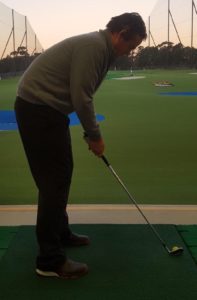 What is C-Posture in a Golfer?
What is C-Posture in a Golfer?
C-Posture occurs when the shoulders and thoracic spine are slumped forward and there is a definitive roundness to the back from the tail-bone to the back of the neck. This posture can limit the player’s ability to rotate by dramatically reducing thoracic spine mobility. If the player fails to keep the back-swing short, they will find it difficult to maintain their posture as they swing the club back.
Any excessive rounding of the upper back or thoracic spine in a golfer is termed “C-Posture”. This posture can simply be the result of a poor set up position and can be corrected by physically adjusting the posture to a more neutral spine. However, the majority of C-Postures are caused by a series of muscle imbalances and joint restrictions that are developed over many years.
Physical Causes of C-Posture:
The most significant joint restriction seen in C-Posture is the lack of thoracic spine extension (limited backward bend or arching of the upper back). This can make it almost impossible to eliminate the C-Posture. Lack of thoracic spine extension can lead to a severe loss of spinal rotation, which in turn will limit the ability to create a good back-swing turn.
For many players, simply telling themselves to stop rounding their shoulders or try to straighten their spine will not make a significant change and can actually be detrimental to their golf swing. Actually, most of the research shows that if your C-Posture or S-Posture is a result of muscle and joint imbalances, the only way to correct the “S” or “C” posture for good is to address these limitations in the gym or with a healthcare professional, such as a Physiotherapist.
C-Posture is best confirmed by screening the player. So if you think you may have an C-Posture then come and see Bonnie (TPI certified) at Bend + Mend in Sydney’s CBD for a Golf Physiotherapy Assessment and TPI screening.





